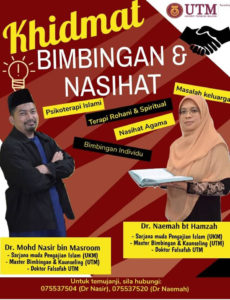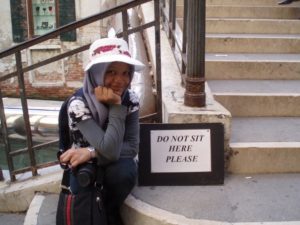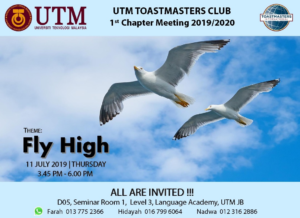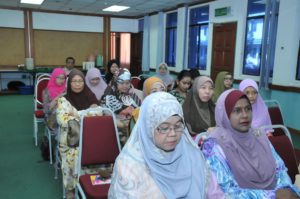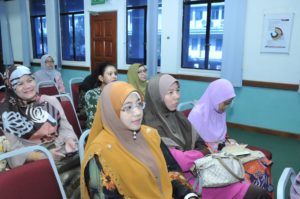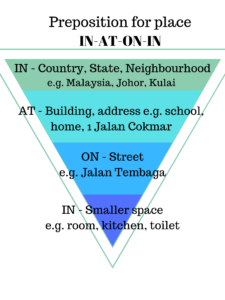UTM endowment charity campaign… Let’s do our part
Khidmat Bimbingan dan Nasihat UTM
Korban
Are we rebellious by nature?
I am in a midst of crafting assignments for my next semester class. Yup. I had enough of people taking my class assignment instructions and use them without proper credit, so I decide to change mine. Well, this is in line with the curriculum review.
As I was googling stuff over the internet, I have problems to decide on a theme. Yup. My assignments have themes, y’all. I will teach human development class next semester. I have some ideas in my mind but I haven’t decided which will be one that I would use in my class. While browsing for articles (yup, my class activity would involve reading articles. If it is not journal articles, it would be something similar. Perhaps a layman-version-research-based articles such as what they publish in Psychology Today), I came across this article about rebellious angst among teens.
Note: When I took this picture in Venice, I was not a teenager but in my early 30s. But looking at the signage post of “Do not sit here please” prompted me to sit beside the signage and strike a pose. 😀 Perhaps I still have the teenage angst in me somewhere that would be displayed when the right time comes.
UTM Toastmasters Club 1st chapter meeting
Future Ready Educators: Start from small
After the talk, we were divided into several groups. For each group, there was a leader. I was in Assoc Prof Dr Jamaluddin Harun’s group.
He briefed us about the aims and tasks that we should do. One of the aims is to have supportive community of practitioners of a NALI. For example, if I use case based learning in my class, I would be grouped in a group of practitioners who also use case based learning in their classes. So, we can exchange ideas and information about our own practices. From faculty level, we can later on have university level community of practitioners of case based learning. But, rather than having a leader or whatsnot, it is more about how the community helps each to enhance their teaching technique.
So, what should we do? First thing first, reflect back on our own teaching practice. What have we done so far? How well we document our practice as evidence i.e. through e-content? How often we share our practice with others i.e. formal like conference or informal like talk with others over lunch?
Second, think about the areas that we need to improve on our teaching practice based on the evidence that we have (i.e. students’ narrative feedback etc.). Be open-minded about this. Don’t rely too much on the eppp rank.
Third, plan and implement the things that we want to improve. This is when the community of practitioners would be needed to provide additional feedback other than our students to ensure that whatever we do are in line with NALI. Simple?
How on earth am I going to do this? I really had enough of colleagues who like to plagiarise my work (technically take the whole thing and claim it as their own). I don’t mind to share provided you do something similar yet you use different instruction in your class.
P.S: Someone asked during the session, how would it benefit him by being a member in one of the community in terms of ELPPT? I roll my eyes. I rest my case.
Future Ready Educators Talk By Assoc Prof Dr Naziha Ahmad Azli
I attended the talk about Future Ready Educators (FREE) by the Director of Curriculum Development and Innovation Unit (CIDU) at D05 yesterday (8 July 2019, Monday).
So, what is Future Ready Educators actually? Simplified version (i.e. my version): It is educators who are equipped with knowledge and skills (whatever necessary) in teaching future generations including the millennials by using technology in their teaching and learning process. Well, everybody must think that “I use powerpoint i.e. technology, so I am already future ready educator“. Err, it is more than using such tools in our class. It is about how we engage students in the learning process with the use of technology.
So, for example, rather than lecturing various theories of motivation, what I did last semester was, I gave each student a copy of material which contains information about theories of motivation. Then later on, I divided them into several groups. Within one group, there would be five members/students. I gave them a written instruction that they can refer to if they do not understand what they should in their discussion. Ok, now, where is the technology that I had used here? Wait. Please continue reading.
It looks like a normal discussion. Well, it is not because I used “jig saw technique”. I gave them specific instruction to follow.
Cooperative learning [Jigsaw activity]
Instructions:
- [Individual task. 10 minutes]: Each member has been assigned with a sub-topic. Each member has to read on his/her own for 10 minutes of the given sub-topic from a textbook.
- While reading the given sub-topic, write down anything that is confusing that you want to ask to other expert in your expert group.
- Write your own notes to summarise your understanding from your reading.
- [Expert group. 25 minutes]: After 15 minutes, those who are assigned with the same sub-topic (for example, behavioural theory Group 1-11 should gather together and discuss the sub-topic based on their individual reading. Since we have 11 groups, so there will be two groups for each topic. Meaning, representative of each topic from Group 1 to 5 will be in Group A and representative of Group 6 to 11 will be in Group B).
- Take turns to explain what you understand based on your reading (3 minutes per person).
- Take turns to record important points presented by each member.
- Ask any question that you might have or anything that need to be clarified based on your individual reading in this group.
- Please help each other to understand by clarifying or giving examples.
- You should spend 25 minutes on expert discussion [3 minutes x 5 or 6 students = 15 or 18 minutes. Additional 7 minutes for recording/refining your notes].
- [Original group. 30 minutes]: After 25 minutes of discussion in expert group, each team member with different sub-topics gather as a group [refer to your group assigned to you].
- Take turns to present each sub-topic to your group member (5 minutes x 5 sub-topics = 25 minutes).
- Ask any question that you might have or anything that need to be clarified during discussion.
- Please help each other to understand by clarifying or giving examples.
- Take turns to record important points presented by each member.
- Recorder(s) and leader should record important points presented by each member.
- You should spend 30 minutes on this session [5 minutes x 5 students = 25 minutes. Additional 5 minutes for recording/refining your notes]
- [Individual task. Short quiz of 10 questions using Quizziz. 15 minutes]: Answer all questions.
So, where is the technology here? After I ended the discussion, to make sure that they understand from peer discussion i.e. jig saw activity, I gave them an online quiz. Based on the online quiz, I would know if some of them are still struggling to understand certain things. Previously, I could just ask them orally about what they have understood or give them paper-and-pencil test. But, to allow them to digest information that they have learned, I gave them ample time to revise on their own before answering my quiz. When I looked at the quiz a few days later on, I noticed that majority of them could answer the quiz well. Meaning, out of 15 questions, majority could get 12 or 13/15. Not bad. So, when I met them on the following week, I just quickly rectified some misconceptions (based on their answers, I assumed that it is due to misconceptions). There you go.
Some of you might say, why did I provide the material for the jig saw activity rather than asking the students to find on their own? Well, in this case, I want to make sure that everybody will use the same material. If I ask them to find the materials themselves, they might find different materials. Well, isn’t it better in that sense, right? Well, not necessarily. It depends. In my case, I notice that NONE of my students had a textbook. So, the material that I provided is from a textbook. My stance is, at least, they read extensively one whole chapter based on the material that I provided (i.e. I photostated ONE whole chapter for them). 😀
Here is an example of cooperative learning i.e. jig saw activity which I added with an online quiz (technology). Am I a future ready educator? Well, I can’t claim myself as such if I only use active learning in my class, right? I need to diversify my teaching techniques and activities that I give to my students. I have a long way to go.
Note: En Fuad Ahmad took some pictures. I looked so intense in this picture. Don’t ask me what I scribbled in my small notebook. It is not something important. 😀
Preposition for place – In – At – On – In: My version
This is my version of preposition diagram that I used in my class. I did a bit improvisation.
Publish or perish or…..
I have my own stand on this issue. But for me, it is all boiled down to being true to oneself. I know that it is becoming a rare practice to be the slow professor in this fast pace academic rat race, yet it depends on one’s intention. Publication does not necessarily mean journal articles. It could be in a different form like module and such.
“Do what you know best and do it the best you can”. That’s what I believe in. It is kind of ironic to succumb into the culture of “stealing” for the sake of balancing your survival based on publish-or-perish principle.


